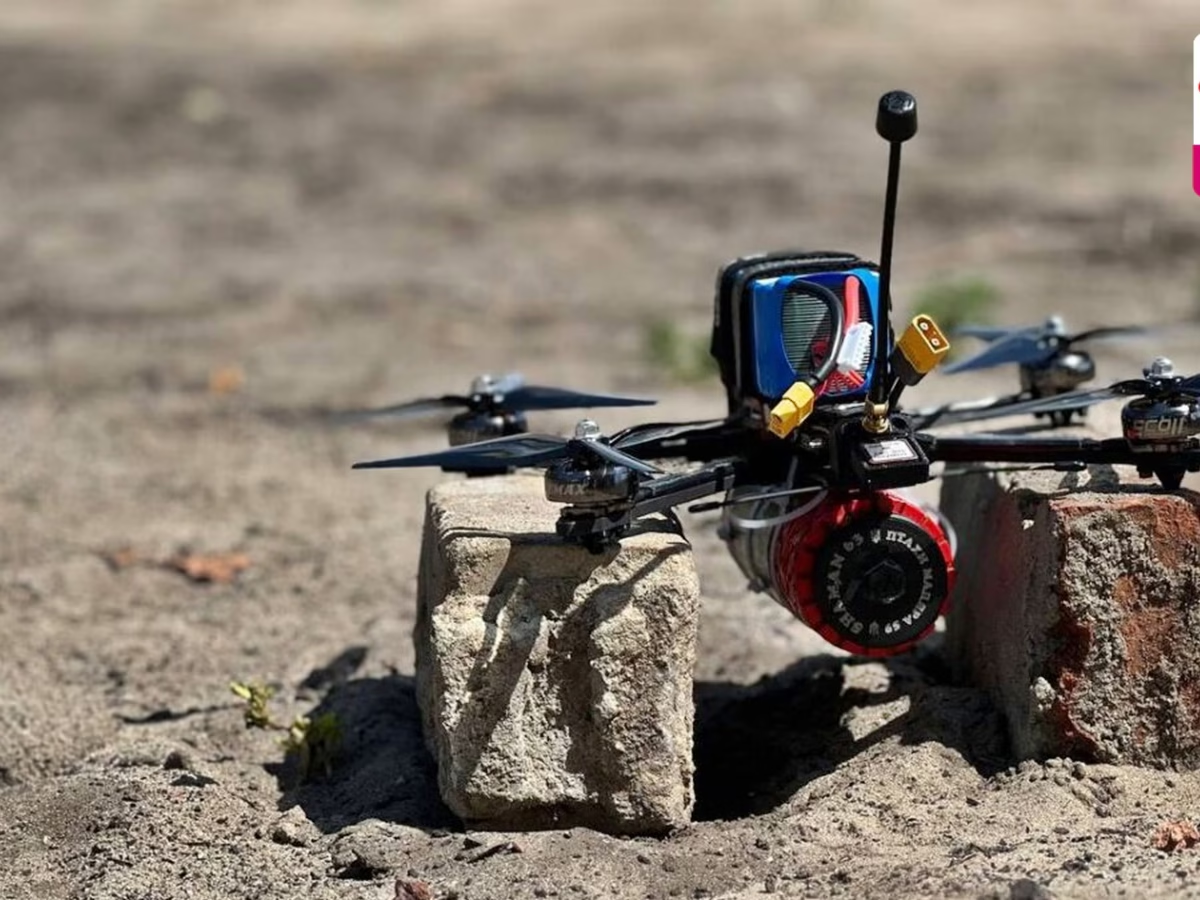FPV drones, initially smuggled into Russia and hidden in mobile wooden shelters, reportedly launched attacks nearly 4,000 km from the Ukraine-Russia border—marking a significant escalation in long-range drone warfare.

In one of the most significant attacks since the conflict began in February 2022, a Ukrainian FPV drone strike on Sunday, June 1, destroyed over 40 Russian aircraft, marking the deepest incursion into Russian territory to date.
The attack took place just one day before representatives from both countries were scheduled to meet in Istanbul for peace negotiations. In a video statement, Ukrainian President Volodymyr Zelenskyy revealed that “Operation Spider’s Web” had been in planning for over 18 months. He emphasized that the operation exclusively targeted military facilities, utilizing 117 drones. According to multiple sources, first-person view (FPV) drones were employed in the strike.
According to the Associated Press, FPV drones were initially smuggled into Russia and concealed inside “mobile wooden houses.” These drones were hidden beneath house roofs that could be remotely opened, allowing the drones to launch and strike their targets. The Russian Defense Ministry confirmed that attacks occurred at five different locations, including in the country’s far east—over 4,000 kilometers away from Ukraine.
FPV drones, or First-Person View drones, allow the pilot to see exactly what the drone’s camera captures in real time.
This live video feed is transmitted to specialized goggles, smartphones, or other screens, giving the pilot an immersive, pilot-eye perspective. Using this view, the drone can be remotely controlled with precision. Besides recreational flying, FPV drones are also widely used for filming and various non-military applications.
The European Union Aviation Safety Agency highlights a key challenge: drone operators cannot directly see the drone’s movement in its environment. This lack of visual contact can reduce situational awareness and cause disorientation. In some cases, a second person, acting as a visual observer, is required to assist the drone operator by providing guidance.
Before deploying FPV drones, a reconnaissance drone with a longer range is sent out first to survey the area and identify a precise target zone. FPV drones, on the other hand, have a much more limited range, typically only a few kilometers.
FPV drones offer significant advantages in combat due to their low cost and ability to conduct deep strikes while staying largely undetected. According to a Reuters report, a single drone equipped with a payload, such as an explosive device, can cost as little as $500 (approximately Rs 42,000). Compared to the much higher expenses associated with traditional artillery systems, these drones present a highly cost-effective alternative.
The small, low-cost FPV (first-person view) drone has emerged as one of the most effective tools in this conflict, especially since traditional warplanes are scarce due to the heavy presence of anti-aircraft defenses near the front lines, the report noted.
Table of Contents
Beyond the Russia-Ukraine war, drones are increasingly utilized in various conflicts because they reduce the risk to human lives by limiting the need for ground troops. Advances in technology have made drones more affordable while enhancing their accuracy and effectiveness. Today, all leading military powers possess unmanned aerial vehicles in their arsenals, including Israel’s “kamikaze” models…
Ukraine has been utilizing FPV (First Person View) drones against Russian forces for some time. According to a November 2023 Reuters report, these nimble FPV drones have proven to be one of the most effective low-cost tactics in Ukraine’s defense against the full-scale invasion by its wealthier and more powerful neighbor, Russia. This drone usage is a key element of Ukraine’s broader attrition strategy.
Both Ukraine and Russia have since ramped up their production of domestically made drones. A NATO official told Foreign Policy in 2024 that FPV drones were responsible for destroying more than two-thirds of the Russian tanks taken out by Ukrainian forces in recent months. Additionally, Forbes reported that Ukrainian manufacturer Vyriy Drone delivered its first batch of 1,000 fully Ukrainian-made FPV drones in March 2025. Ukraine is on track to produce over four million drones this year, according to the report.
A report published last year by the think tank Center for Strategic & International Studies highlighted China as the clear dominant force in commercial drone manufacturing. It noted that DJI Technology Company, a Chinese firm and the world’s biggest commercial drone producer, commands an impressive 90% share of the U.S. commercial drone market and 80% of the global consumer drone market. Additionally, China leads in manufacturing key drone components, including small lithium-ion batteries, with Contemporary Amperex Technology Company Limited being the largest battery producer by capacity worldwide.
READ ALSO….Drones Hidden In Trucks”: How Ukraine Struck 5 Airfields Deep Inside Russia














 Categories
Categories








